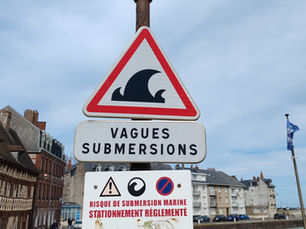top of page
News & Articles


Belém Facing Climate Change : What Will the COP30 Host City Look Like in 2075 ?
Belém, which is currently hosting COP30, is also threatened by worsening heat waves, rising sea levels, and other impacts of climate change. Projections by Callendar using ClimateVision give an idea of what the Brazilian city will look like in 50 years.
1 day ago3 min read


Coastal Risks: How Callendar Mapped the Future of Territories Facing Rising Seas
With nearly 20,000 kilometers of shoreline, France is particularly exposed to coastal risks: erosion, sea level rise, storm flooding... This article demonstrate a comprehensive methodology to assess these risks and their evolution with climate change. Applied to the entire territory, both mainland France and overseas territories, it provides an unprecedented assessment and shows how high-resolution, science-based risk assessment can be realistically performed on whole country
Aug 265 min read


Defining Heatwaves and Measuring Their Intensity: How the Historic 2003 Heatwave Could Become Commonplace in France
For planners, investors and policymakers, knowing when and where extreme heat will strike is crucial. Robust severity assessments is needed to offer a clearer view of potential impacts, yet heatwaves are complex and defined in many ways. This article presents a method from recent scientific research to measure severity and reveals how climate change is turning rare heatwaves into regular events.
Aug 125 min read


Mapping Wildfire Impact: Demonstration of a Scalable Methodology for Local Climate Risk Assessment
Wildfires are increasing worldwide due to climate change, yet many regions lack detailed historical data at local levels. We developed a scalable method using satellite data to estimate wildfire risk by administrative units, demonstrated on France’s complex municipal system. This approach highlights uneven fire exposure and can be applied globally, supporting insurers, planners, and utilities in climate risk management with consistent, location-specific insights.
Aug 74 min read


The $2 Trillion Question: Callendar Releases New Report on Short-Term Climate Risks for Global Infrastructure
Over $2 trillion in global infrastructure losses are expected by 2035 due to climate-related risks like floods, extreme heat, storms, and droughts. A new report from Callendar highlights outdated design standards as a key vulnerability across sectors including energy, transport, telecoms, water, and roads.
Jun 242 min read


Designing for the Next Heatwave: How ClimateVision Helps Build Resilient Data Centers
Data center failures during the 2022 UK heatwave exposed a critical flaw in how we design infrastructure: relying on outdated weather data. As climate change make heatwaves more severe and more frequent, extreme temperature assumptions fall short. Discover how ClimateVision, Callendar’s climate impact tool, empowers operators with cutting-edge climate projections,making it easier to build heat-resilient infrastructure, anywhere in the world.
May 53 min read


Selecting a Bias Correction Method: A Case Study on Multivariate Indicators
Univariate bias-correction methods can distort multivariate indicators, such as heat indexes that combine temperature and humidity.
Apr 66 min read


Introduction to Extreme Value Theory for Climate Risk Analysis: Calculating a 100-Year Heatwave with Python
Can we predict the once-in-a-century heatwave in Paris ? EVT helps anticipate rare extreme weather events and adapt to climate change.
Nov 21, 20227 min read
bottom of page